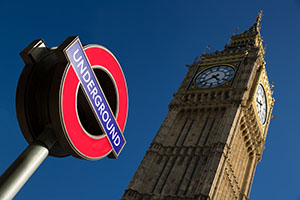On Thursday November 2nd the U.K.’s Bank of England, through its monetary policy committee, will announce its decision regarding the base interest rate. Currently at 0.25%, the general consensus, from the economists polled by the leading news agencies Bloomberg and Reuters, is for a rise to 0.5%. Despite the potential rise representing the first increase in ten years, a 0.5% rate will simply restore the base rate to the level before emergency measures were taken, after the Brexit referendum vote and result, in June 2016.
It must be noted that any rise will not be introduced because the U.K. economy is perceived to be strong enough to weather a program of rate rises, to eventually normalize rates to perhaps 3% or higher, the BoE is concerned over inflation (CPI) reaching 3% in October and needs to take rapid measures to cool inflationary pressures. The pound has fallen versus its two major trading partners’ currencies since June 2016; versus the euro the pound has fallen circa 14%, versus the U.S. dollar the fall has been approx. 9%. This has impacted on the price of imports and in such a consumer driven economy, also heavily reliant on energy imports priced in dollars, input producer price inflation had risen sharply in the U.K. pushing up prices. Whilst wages have failed to keep pace; at approx. 2.1% YoY (without bonuses) wage rises are approx. 1% below inflation.
If the BoE’s MPC announce a raise, then investors’ attention will immediately turn to the narrative and copy delivered by the policy committee; specifically whether or not the decision was unanimous, or a majority. The BoE will hold a press conference immediately after the rate announcement, at which they’ll produce their inflation report. It’s during this process when FX traders, analysts and investors, will discover if the BoE/MPC see the potential rise as a one off measure to get ahead of the inflation curve, or the beginning of a program to tighten the central bank’s loose monetary policy. The BoE have also indicated concerns regarding unsecured consumer debt; up by 9.9% YoY and rate rises will curb demand.
Mark Carney, the BoE Governor, issued forward guidance around October 10th, hinting at a potential rise, sterling has since risen versus its major peers; GBP/USD has risen from approx 1.3040 to breach 1.330. EUR/GPB has fallen through both the 200 and 100 DMA, from the 90.00 handle to 0.9750. Therefore the implication that a rise was imminent, has already delivered Mr. Carney’s desired result; a rise in the value of the U.K. pound versus its major peers. However, the deputy governor at the Bank of England, Sir Jon Cunliffe, recently suggested that it may be too early to begin raising interest rates. As a consequence of the opinions of these two leading policy makers, the rise in GBP versus its peers may already be “priced in” and if the interest rate is raised, GPB pairs may not rise much further. However, traders should be mindful of the possibility for significant spikes, particularly if the inflation report and the accompanying narrative are hawkish.
KEY ECONOMIC METRICS RELEVANT TO THIS HIGH IMPACT CALENDAR EVENT
• Current interest rate 0.25%.
• Inflation (CPI) 3%.
• GDP growth annually 1.5%.
• GBP growth Q3 0.4%.
• Unemployment rate 4.3%.
• Wage growth 2.2%.
• Private debt v GDP 231%.
• Services PMI 53.6.
• Retail sales YoY 1.2%.

